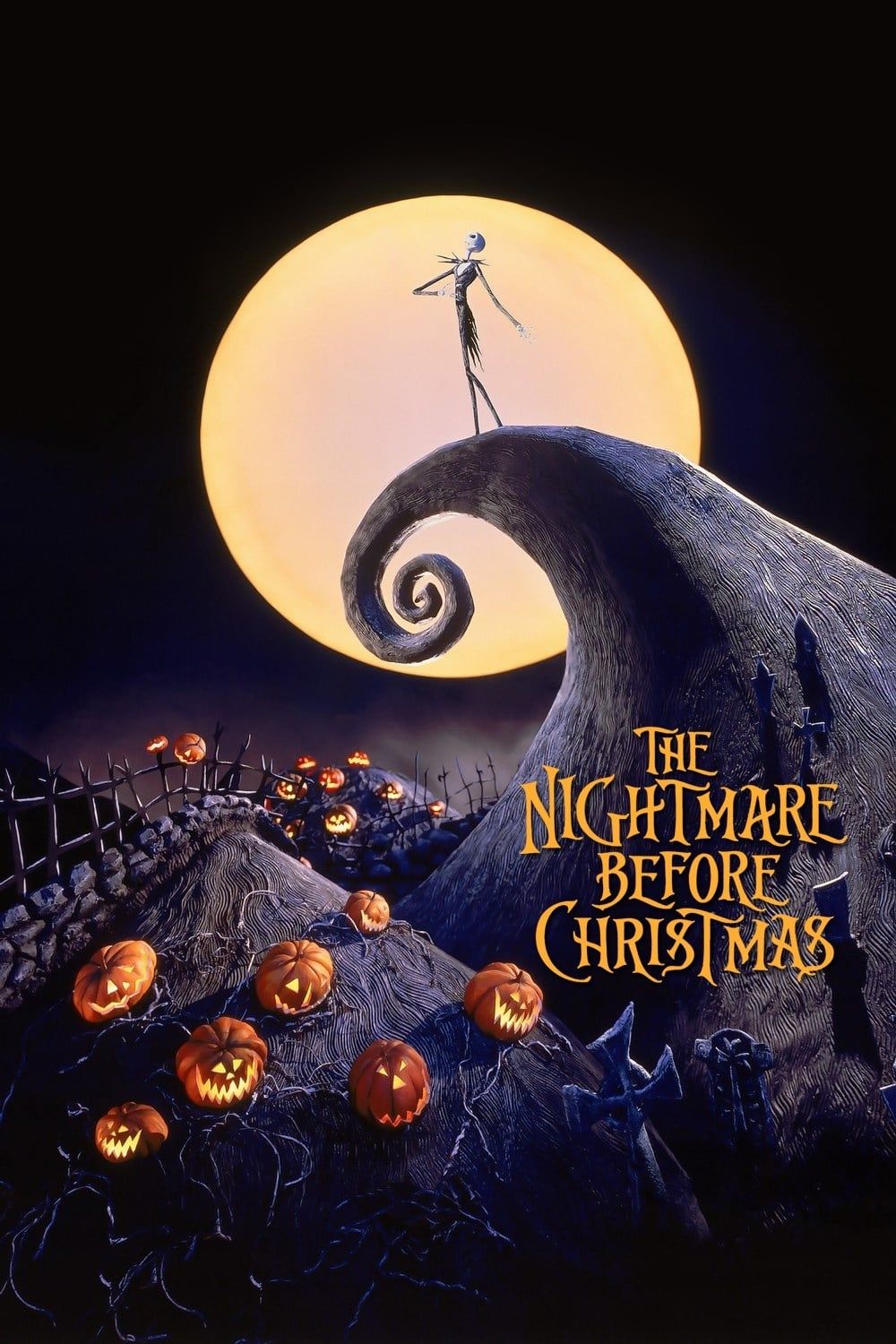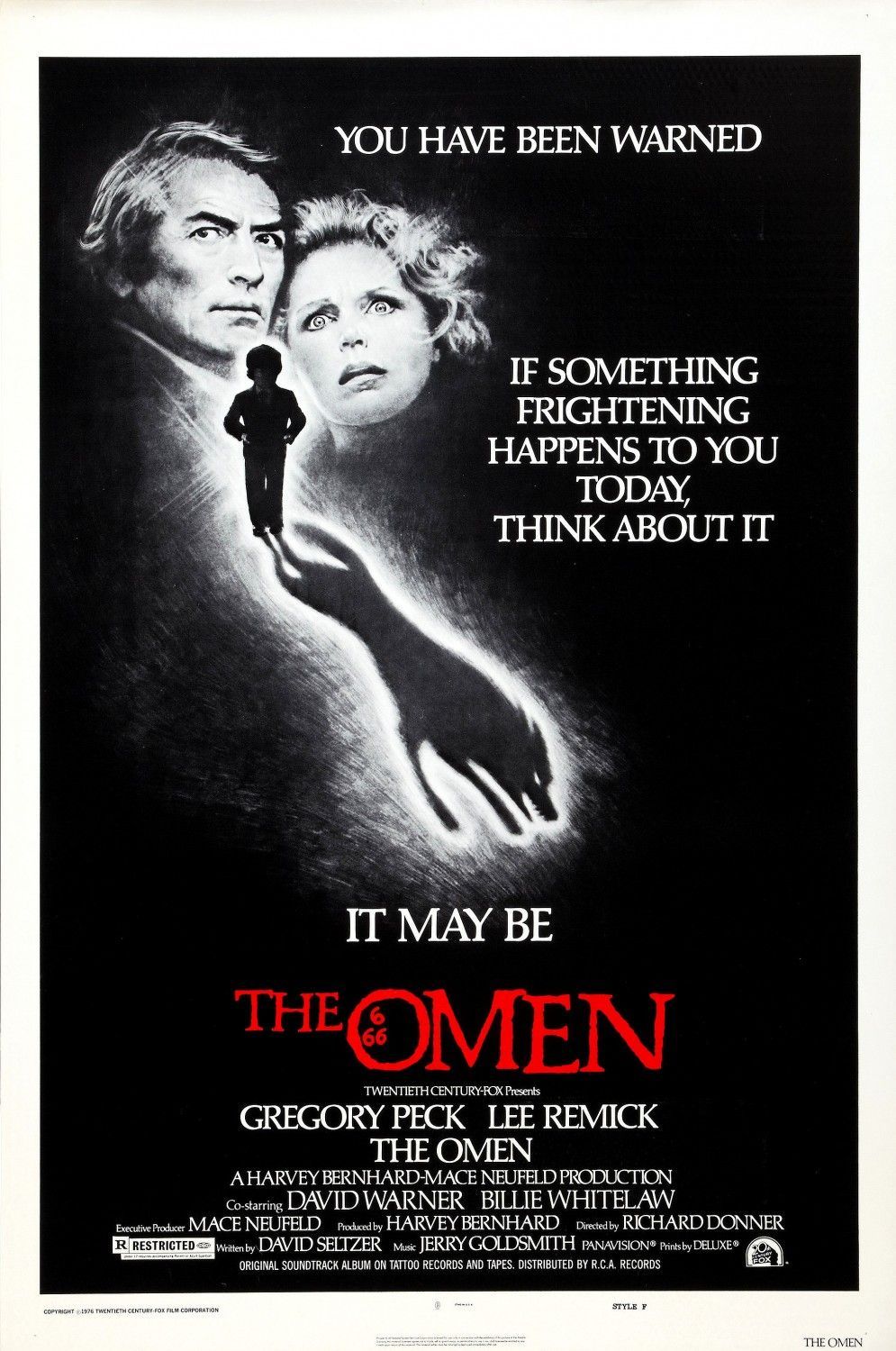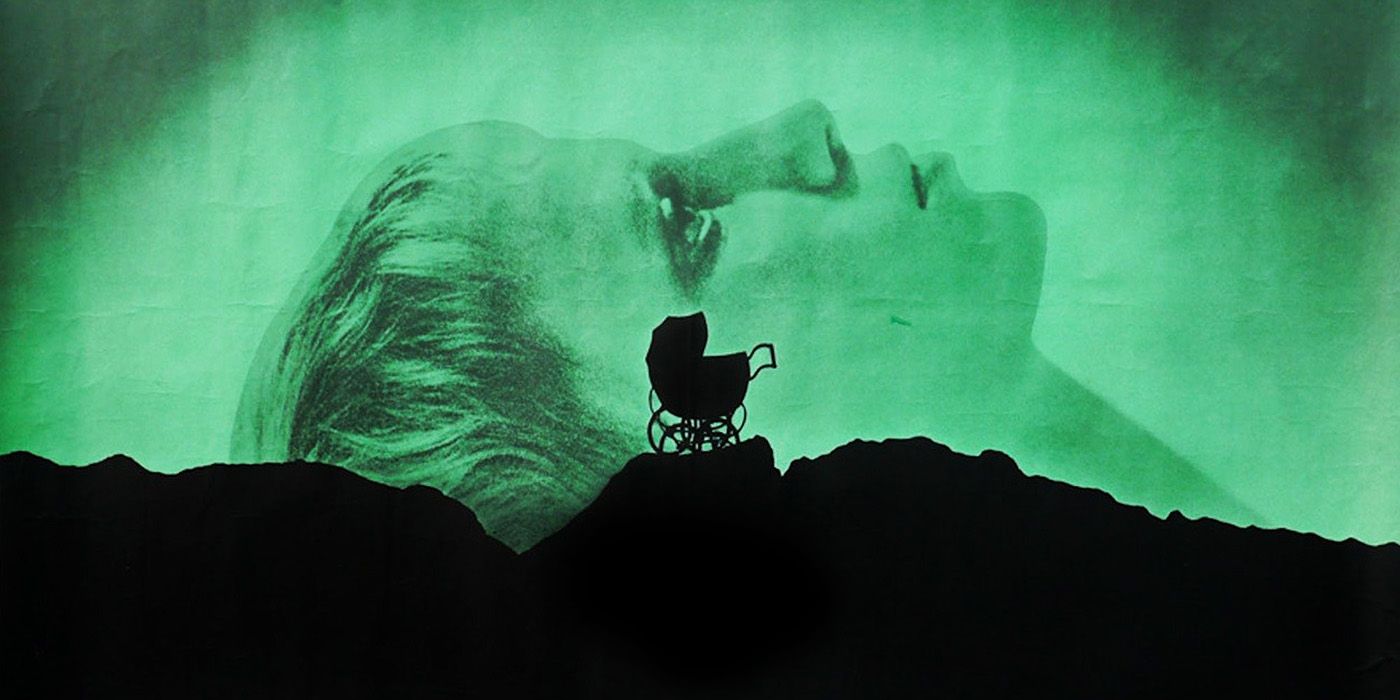Perhaps the most important element in making a horror movie a thrilling experience for audiences is the soundtrack. Horror movie music has a tough job: it must create and build suspense, tension, and feelings of dread and terror while not overshadowing the visuals and action on screen, keeping the audience unaware of what it’s doing. The best directors fully understand the importance of music in their films and tend to collaborate in depth with their favorite composers. Imagine Alfred Hitchcock films without the presence of Bernard Herrmann‘s brilliant scores. Both Steven Spielberg and George Lucas relied heavily on John Williams‘ symphonic compositions to bring their thrills to the screen. The quirkiness of Danny Elfman‘s scores fit naturally with Tim Burton‘s offbeat and sometimes terrifying visions, and John Carpenter was so aware of how important music is to a director’s vision he composed his music.
The movies in this list have soundtracks that use everything from classical leitmotifs to electronica and Gregorian chants to create some of the most iconic music ever written for the screen. These are the best horror movies with memorable and acclaimed soundtracks — genuine works of melodic art that enhance the themes and messages of the story, often stealing focus from the action itself. They will be ranked based on how effective they are within the narrative, how memorable they are, and how big an impact they made on cinema.
10 ‘Tim Burton’s The Nightmare Before Christmas’ (1993)
Music by Danny Elfman
In the over thirty years since its release, The Nightmare Before Christmas is a certified holiday classic. “This Is Halloween,” the film’s opening piece, is up there with the Ghostbusters theme and Michael Jackson’s “Thriller” as among the most requested Halloween songs. Although Danny Elfman was well into his career as a film composer, having written the scores for Burton’s Batman, Edward Scissorhands, and Beetlejuice, among others, he was feeling weighed down by his other job, frontman for the new wave band Oingo Boingo. Working on Nightmare convinced him it was time to leave, and the band would break up two years later.
Nightmare was Elfman’s first movie musical, and he drew from the works of masters of musical theater like Cole Porter, Rogers and Hammerstein, and perhaps most importantly, Gilbert and Sullivan, giving the soundtrack the feel of an operetta in which characters’ turning points are sung, not spoken. Elfman also weaved in familiarly creepy horror movie leitmotifs to give it an eerie feel. His song “Making Christmas” makes use of a four-note musical phrase from a 13th-century Gregorian chant known as “Dies Irae” (a phrase that pops up frequently in many films) to great effect, and the entire score is memorably creepy and fun.

- Release Date
- October 9, 1993
- Director
- Henry Selick
- Runtime
- 76
- Writers
- Tim Burton , Michael McDowell , Caroline Thompson
9 ‘The Rocky Horror Picture Show’ (1975)
Music by Richard Hartley and Richard O’Brien
Adapted from the London stage play written by Richard O’Brien, The Rocky Horror Picture Show was an initial flop at the American box office. Thanks to midnight screenings and quirky fans, it quickly became a cult classic like none other. At the height of its madness, fans would attend screenings dressed as their favorite characters, shout lines of dialogue along with the characters, and throw props at the screen.
Just as the movie itself is an homage to a mashup of horror movie tropes, O’Brien’s songs and Hartley’s arrangements use a wide variety of popular music styles mixed with familiar horror movie themes. From the danceable pop of “Time Warp” to the bombastic rock star belting of Meatloaf’s “Hot Patootie – Bless My Soul” and Tim Curry‘s glam rock showstopper “Sweet Transvestite,” the soundtrack has an offbeat frenetic energy combined with unsettling themes, adding up to ghoulish fun. It may have taken a while to catch on, but by 1978, the soundtrack album reached number 49 on Billboard’s Hot 200, was certified gold by the RIAA in 1981, and remains a popular Halloween favorite today.
8 ‘A Clockwork Orange’ (1971)
Music by Wendy Carlos
Nominally science fiction, Stanley Kubrick‘s terrifying vision of the future features shocking scenes of violence and depravity just as brutal and horrific as almost any horror film. Composer Wendy Carlos weaves together Classical pieces (everything from “The William Tell Overture” to “Pomp and Circumstance” and “The Thieving Magpie”) with inventive electronic music as almost a counterpoint to the brutality on screen. The film’s main theme is an electronic arrangement of Henry Purcell’s “Music for the Funeral of Queen Mary” but is not above using Gene Kelly‘s “Singing In the Rain” while gang leader Alex DeLarge (Malcolm McDowell) viciously beats a man.
Perhaps most memorable is her arrangement and use of Beethoven‘s Ninth Symphony. The piece itself plays a prominent role in the film as Alex’s favorite music, which is ultimately used against him. Carlos’ “March from ‘A Clockwork Orange” was based on the choral movement of Beethoven’s 9th in which she used a vocoder (an early synthesizer) to create electronic voices, inspiring synthpop bands for decades to come. The fourth movement is used as background to the “conditioning film” Alex is forced to watch, and later, the second movement accompanies his attempted suicide. Carlos’ blending of classical music with electronics gives the soundtrack an overall feeling of creepiness and dread that lingers long after the film is over.

- Release Date
- December 19, 1971
- Director
- Stanley Kubrick
- Cast
- Malcolm McDowell , Patrick Magee , Michael Bates , Warren Clarke , John Clive , Adrienne Corri
- Runtime
- 136 mins
- Writers
- Stanley Kubrick , Anthony Burgess
7 ‘The Shining’ (1980)
Music by Wendy Carlos and Rachel Elkind
Kubrick would return to that same blending of electronic and classical music used in A Clockwork Orange for his ultimate horror masterpiece, The Shining. He brought back Wendy Carlos, along with her producer and composing partner, Rachel Elkind, to create the score, which is chock-full of classical music nuggets from Bela Barok and Krzysztof Penderecki. Their strange synthesized soundscapes make for eerie and offputting moments throughout the film.
The opening sequence is probably the most memorable. In the scene, Jack Torrence (Jack Nicholson) and his family are driving through beautiful New England mountains. Looks like a charming, rustic vacation, but the score tells a different story. Carlos and Elkind adapted a 13th-century Gregorian chant, “Dies Irae” (which loosely translated means “day of wrath”), using deep booming horns that evoke a journey into the very bowels of hell. The sense of foreboding right from the start grips the viewer and does not let go, ensuring a scary and haunting experience will be had.

- Release Date
- May 23, 1980
- Director
- Stanley Kubrick
- Cast
- Jack Nicholson , Shelley Duvall , Danny Lloyd , Scatman Crothers , Barry Nelson , Philip Stone
- Runtime
- 146 minutes
6 ‘Rosemary’s Baby’ (1968)
Music by Krzysztof Komeda
In Rosemary’s Baby, director Roman Polanski opens on a seemingly normal Manhattan skyline. The camera pans in, accompanied by low strings, gentle guitar, and a female voice singing the soft “la, la, las” of a lullaby. Nothing unusual here, but the slightly menacing tones and minor chords make it one of the most unsettling openings to a horror film ever. Why? Thank the genius of Krzysztof Komeda and his oddly beautiful and intensely weird score.
Komeda’s jazz instrumentation and melodies seem perfectly normal at first, as does the sophisticated Manhattan lifestyle Rosemary Woodhouse (Mia Farrow) and her husband Guy (John Cassavetes) are living. The city, with all its hustle and bustle, is an unusual place for a horror film; much easier to build a sense of dread and terror in an old country house with all its shadows and creaks. But just as Polanski begins revealing the horror lurking beneath it all, Komeda’s score becomes increasingly unhinged with some of the wildest uses of instruments ever recorded for a horror movie. Squawking trumpets, violent strings, and choral phrases that seem to battle them all create a chillingly hellish atmosphere to match Polanski’s terrifying visuals.
5 ‘The Omen’ (1976)
Music by Jerry Goldsmith
While other horror movie composers might use a few notes of a musical phrase from a Gregorian chant, award-winning composer Jerry Goldsmith created his own for the soundtrack of Richard Donner‘s horror masterpiece The Omen. Eschewing his usual orchestral scoring, he employed choral arrangements that increase in intensity as the horror unfolds on screen. In addition to the score, he wrote one of the most chilling theme songs in horror movie history — “Ave Satani,” or ‘Hail Satan’ in Latin.
The story goes that he wanted to create a kind of reverse Gregorian chant by inverting Latin phrases from the Traditional Latin Mass, making them sound satanic. A London choirmaster who was an expert in Latin helped him come up with phrases like “sanguis bibimus“ (we drink the blood), “tolle corpus Satani“ (raise the body of Satan), and “ave, ave Versus Christus“ (hail, hail Antichrist), which are heard throughout the film and create a sense of religious terror as they are intoned. Goldsmith won the Academy Award for Best Original Score that year, and “Ave Santani” was nominated for Best Original Song.

The Omen
- Release Date
- June 25, 1976
- Cast
- Lee Remick , Gregory Peck , David Warner , Billie Whitelaw , Harvey Stephens
- Writers
- David Seltzer
- Runtime
- 111 minutes
4 ‘Halloween’ (1978)
Music by John Carpenter
John Carpenter only had a tiny budget with which to produce and direct his horror masterpiece Halloween. Having no money to hire a composer or orchestra after a rough cut of the film was done, he made the decision to draw on his musical background and score the film himself. Using only a piano and synthesizer, he created one of the most recognizable horror movie themes ever written. Its simple and repetitive nature easily gets stuck in the head of the audience and underscores the horror of Michael Myers.
The repetitious pattern of piano notes is amplified and moved forward by booming and sinister synthesizer tones. The piano riff repeats endlessly, representing the simple yet chilling relentlessness of Michael Myers; it is as inescapable and unstoppable as he is. Carpenter does admit that he had some assistance with the score from composer and music professor Dan Wyman, who would go on to work with Carpenter again in The Fog, and that though he can play any keyboard, he can’t read or write a note of music. Still, his use of a synthesizer in the score became the standard for low-budget horror and sci-fi films throughout the ’80s and early ’90s.

Halloween (1978)
- Release Date
- October 27, 1978
- Runtime
- 91 minutes
3 ‘Psycho’ (1960)
Music by Bernard Herrmann
The famous shower scene in Psycho might very well have fallen flat instead of becoming one of the most shockingly memorable sequences in film history if it hadn’t been for the clever scoring work of horror film composer Bernard Herrmann. It was 1960, and director Alfred Hitchcock was very limited in what he could show on screen in terms of violence, stabbing, and blood. But it’s Herrmann’s strings that convey the brutality of Marion Crane’s murder in the shower.
The score is fairly calm at first, using lush, lilting phrases with just the slightest hint of the darkness to come. Everything changes in the shower scene. To achieve the harsh violin “stabs,” Herrmann had his violin players bowing their instruments on the wrong side of the bridge, creating piercing, percussive sounds. Then, with each “stab” of the violin, deeper notes are added. The notes puncture downwards, giving the sense of penetration that Hitch could not really show on screen. While it’s not his best score (his first was for Orson Welles‘ Citizen Kane, and his last was for Martin Scorcese‘s Taxi Driver, quite an illustrious career), it’s probably his most memorable and clever, earning it a spot as the American Film Institute‘s fourth greatest film score of all time.

Psycho
- Release Date
- June 22, 1960
- Cast
- Anthony Perkins , Vera Miles , John Gavin , Martin Balsam , John McIntire , Simon Oakland
- Runtime
- 109 minutes
- Writers
- Joseph Stefano , Robert Bloch
2 ‘Jaws’ (1975)
Music by John Williams
Another of horror’s most recognizable themes came as the result of failing special effects. During the production of Jaws, director Steven Spielberg famously spent a lot of money on a mechanical shark that just wouldn’t work. It was such a problem that production on the film stopped and a new script was written with fewer shark scenes so he could avoid using the disastrous monster. Then, John Williams had an idea.
Once again, that famous 13th-century Gregorian chant “Dies Irae” came to the rescue. Williams took the first two notes of it, inverted them, and played them slowly at first but with increasing speed to suggest the approach of a killing machine. Whenever the shark’s presence was called for, the simple two-note ostinato was used. Williams’s score evokes fear when needed, but as the film changes tone from horror to more of an adventure story, so too does the score, using rapid, percussive strings with echoes of Dvorak‘s fourth movement of The New World Symphony to give it that adventurous feel. Williams’s score won the Academy Award for Best Original Score, a Golden Globe, and a Grammy and is ranked the sixth greatest film score by the American Film Institute.
1 ‘The Exorcist’ (1973)
Music by Mike Oldfield and Jack Nitzsche
Like just about everything else involved in the making of William Friedkin‘s horror masterpiece The Exorcist, creating the soundtrack for it was fraught with problems. While Mike Oldfield’s “Tubular Bells” may be one of the most recognizable horror themes in movie history, it was not written for the movie at all. It was the British musician’s debut album for Virgin Records, an instrumental progressive rock piece in which Oldfield himself played most of the instruments. Friedkin found it in the Warner Brothers music library and felt it had the child-like lullaby feel he was looking for, so he got the studio to buy the rights to it.
Perhaps the biggest problem in the soundtrack’s creation was the director himself. Friedkin was known to be temperamental and needed to micromanage every aspect of the film. He initially hired famed film composer Lalo Schifrin for the job but hated the score Schifrin came up with so much that he reportedly threw the tapes out in the studio parking lot. Friedkin also went to Bernard Herrmann, who turned him down because Friedkin didn’t like his plan to use organ music and was insisting on sharing composing credit. He finally settled on Oldfield’s album and Jack Nitzche, a composer/arranger with a rock sensibility. Hence, the score has an edgy rock feel to it that lends itself to building tension and a sense of horror when combined with Friedkin’s terrifying scenes. But of course, it’s the iconic Tubular Bells matched with the shot of Max Von Sydow‘s exorcist standing in the shadows of a streetlight that are the essence of The Exorcist.

- Release Date
- December 26, 1973
- Runtime
- 122 minutes
- Writers
- William Peter Blatty
Source link










